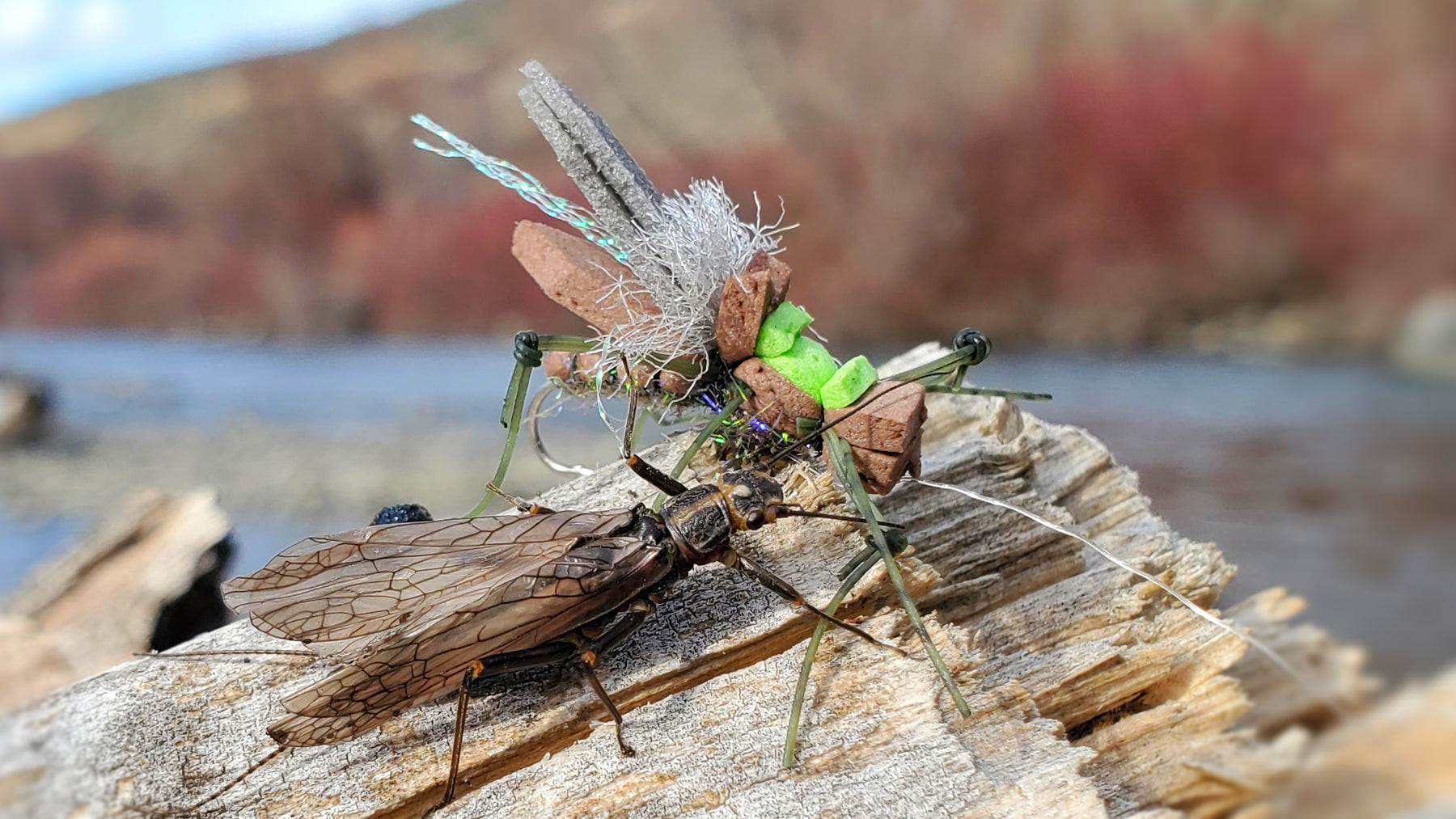CALL NOW (509) 933-2300
CALL NOW (509) 933-2300

The first thing to keep in mind is that the water is still cold. Adult Skwalas don't start to hatch until the water hits about 42 degrees although we have seen them hatch around the 40 degree mark. In cold water the fish are not going to live in traditional whitewater riffles. They are going to be in the slower walking speed pools, especially on the edges where the water is about 24" deep.
No offense here, but not all fly fisherman are good fly fisherman. Yea haha big news right?! A lot of my best friends aren't very good fisherman. I love 'em to death, but they are often ill prepared and complain about the fishing being dead. Especially during the Skwala Hatch. I try to keep my mouth shut, but the fishing is NOT dead, you just aren't tuned into March dry fly fishing!
Since they are friends I'm not afraid to call 'em out and also give them some professional advice. Preparation pays when it comes to catching fish, and its fun. Don't overthink it, but you should at least strategize a little bit. The timing of the Skwala hatch typically allows the angler plenty of time to get ready over the winter. At the moment its going full tilt and we have good conditions over this upcoming week.
Where are you going to fish? I'm not talking about the name of a river. Where will you park? Where will you float? How will you hike into the river? What water type and speed are you looking for? What holes, pockets, or log piles will you target? If you can't answer these things but still cherish success... maybe a little scouting trip is in order. Using a bad weather day or a cold morning to scout around is really helpful.
What flies will you use? Not sure. A ball player doesn't wait till game day to buy a bat or mitt. Get some flies now. There are no secrets here, they are called "Skwalas" and thanks to Google you can find about 1,000 different patterns. Get your flies, get them in your box. Get 'em at Red's.
Suggested Flies for a Skwala Stonefly Hatch
How is your leader supply? Get your stuff out, organize your pack or vest and get your tippet and leaders manifested and ready. I like a 9' RIO 3X Tapered Leader.
What if the river is muddy? This might mean a strategy change, OR you might take advantage of the poor conditions to scout new access points or just work on your fishing. Your casting, mending, wading, and reading water will all get better despite the tough bite. There is no better way to improve your game than to struggle a bit. Tough love.
What if there is no Skwala hatch? What do I do? Go home? Haha. No, there are lots of other options but be aware that due to temperamental weather and water conditions in March that the hatch may not be happening. Or... it might happening but with very few adult bugs actually present. Be diligent with dry flies, but be ready with Plan B and don't be afraid to use a variety of small nymphs, streamers, or Blue Winged Olives. As April 1st approaches be thinking about March Browns.

Understanding hatch dynamics is critical to angling success, plus it makes your days on the water much more rewarding when you fully understand the natural cycle of insects, water, and trout. During the winter, the trout have been shivering and hungry (much like a fly fishing guide), and as spring begins the trout become aggressive. The big trout are especially hungry because they will be spawning soon and need the extra energy. This timing makes the Skwala hatch unique because it occurs at the fringe of spring just as the water warms enough to warrant aggressive feeding.
We thoroughly enjoy learning about the insects our hand tied flies imitate. Sure you can have success simply stopping by the fly shop and seeing what's hot and never giving the insect it imitates a second thought, but learn a little about the insect and you might be surprised at how rewarding fly fishing becomes. Our girlfriends, wives, and non fly fishing buddies have endearingly dubbed us as "bug dorks", fine by us because we will be the "bug dork" with a fish on! If you want to be that guy or gal too, start by learning about the Skwala Stonefly. It is olive colored, the nymphs live in fast water, it has 6 long legs, 2 long antennas, 2 long tails, is 22-38mm long, and tastes like chicken. The most common hook size is #8-12.

Skwala Stonefly Nymph
It is born, it lives in the river for 2-4 years, and then it crawls out on the bank to complete its metamorphosis. It breeds, then the females return to the water in the afternoons to lay eggs and many get eaten by trout on the surface at this time. In the process of migrating to the shore, trout gobble up the nymphs (the aquatic stage of the bug). This process makes it one of the best hatches of the year because it draws the fish towards the shore for good dry fly fishing opportunities! This also makes the Skwala hatch unique.

Skwala Stonefly Adult